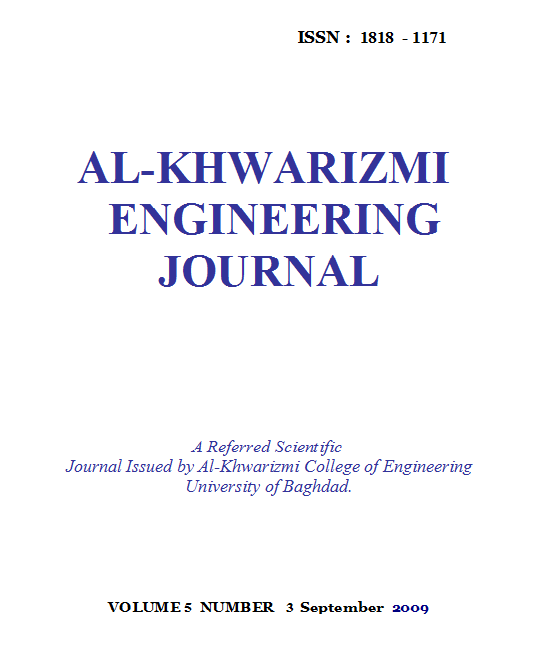Removal of Sulfate from Waste Water by Activated Carbon
Abstract
Activated carbon was Produced from coconut shell and was used for removing sulfate from industrial waste water in batch Processes. The influence of various parameter were studied such as pH (4.5 – 9.) , agitation time (0 – 120)min and adsorbent dose (2 – 10) gm.
The Langmuir and frandlich adsorption capacity models were been investigated where showed there are fitting with langmmuir model with squre regression value ( 0.76). The percent of removal of sulfate (22% - 38%) at (PH=7) in the isotherm experiment increased with adsorbent mass increasing. The maximum removal value of sulfate at different pH experiments is (43%) at pH=7.
Downloads
References
[2] Essam almajid ,"Environment Engineering" Jordan 1995.
[3] John G "Adsorption technology and design " Wiley series , UK,1995.
[4] Martin R. and Albahrrani K., "Experimental of factor influencing adsorption", Water research, vol. 12 , pp 879-888 , 1978.
[5] Minnesota Dept. of health report "sulfate in well water" 2008.
[6] Namasivayam , D. Sangeetha, "coconut coir pith for the removal of sulfate", J. of Desalination, Vol. 219 , pp 1 – 13 , 2008.
[7] Soaad A .Abaawy and Mohammed S. Hussn , "water tests" Al Musel university, Iraq, 1990
[8] John and Barry C. "Adsorption technology and design", Oxford, UK, 1998.
[9] Zhimang g. ,Jun F. and Baolin deng , "Preparation and Evaluation of GAC Based Iron Contain Adsorbent for Arsenic Removal" Environ. Sci. technol ,vol 39, pp. 3833 – 3843 , 2005.
Downloads
Published
Issue
Section
License
Copyright: Open Access authors retain the copyrights of their papers, and all open access articles are distributed under the terms of the Creative Commons Attribution License, which permits unrestricted use, distribution, and reproduction in any medium, provided that the original work is properly cited. The use of general descriptive names, trade names, trademarks, and so forth in this publication, even if not specifically identified, does not imply that these names are not protected by the relevant laws and regulations. While the advice and information in this journal are believed to be true and accurate on the date of its going to press, neither the authors, the editors, nor the publisher can accept any legal responsibility for any errors or omissions that may be made. The publisher makes no warranty, express or implied, with respect to the material contained herein.












